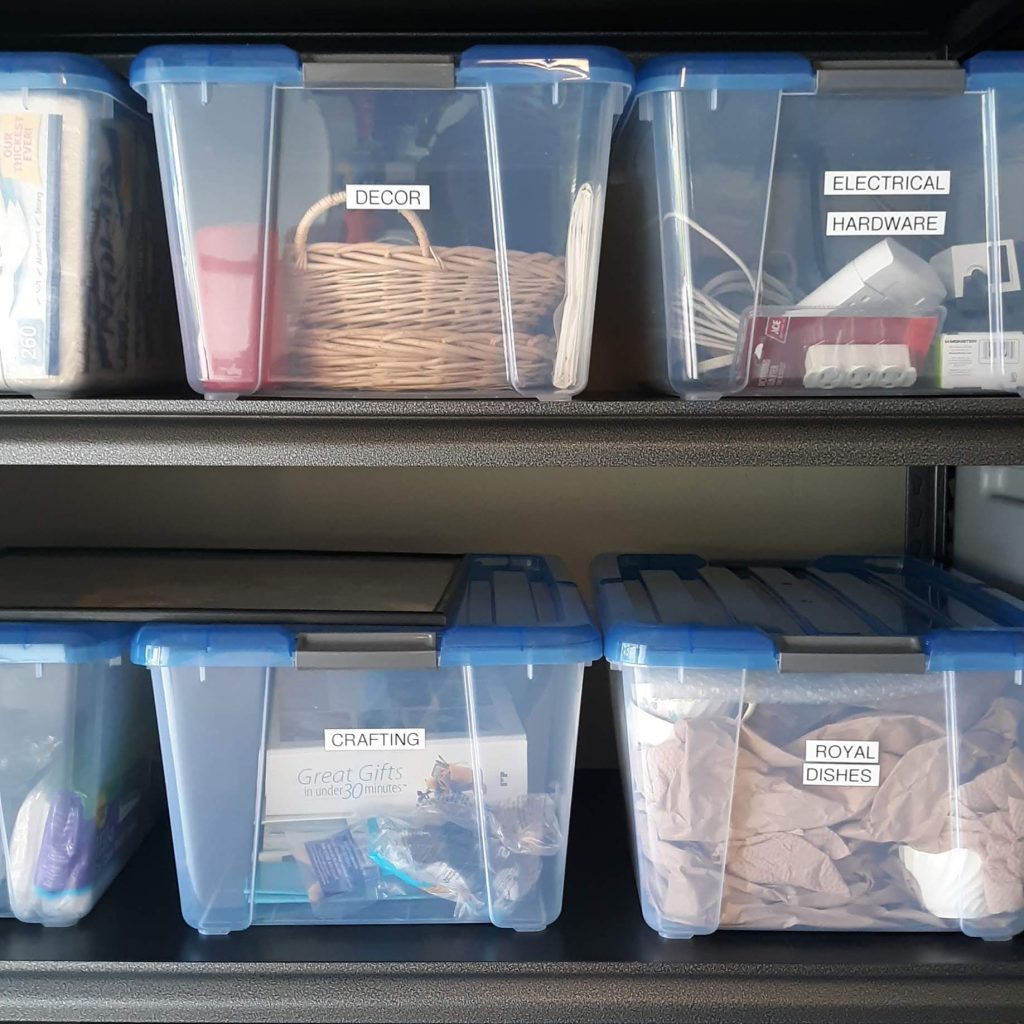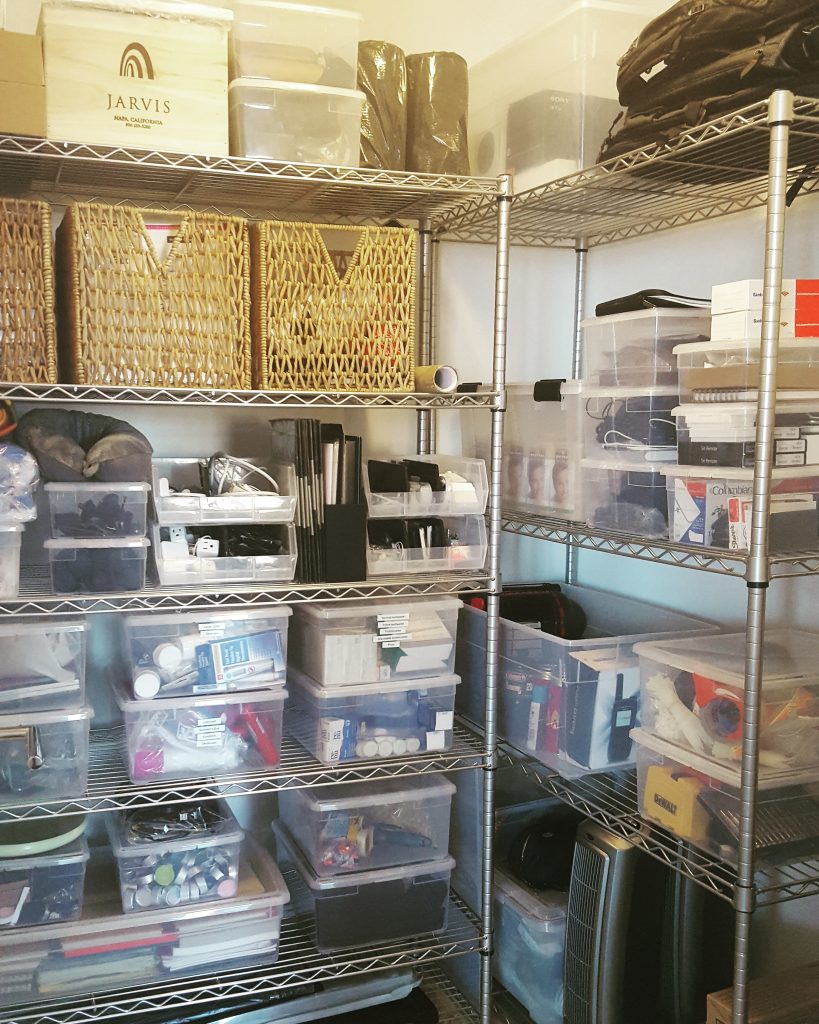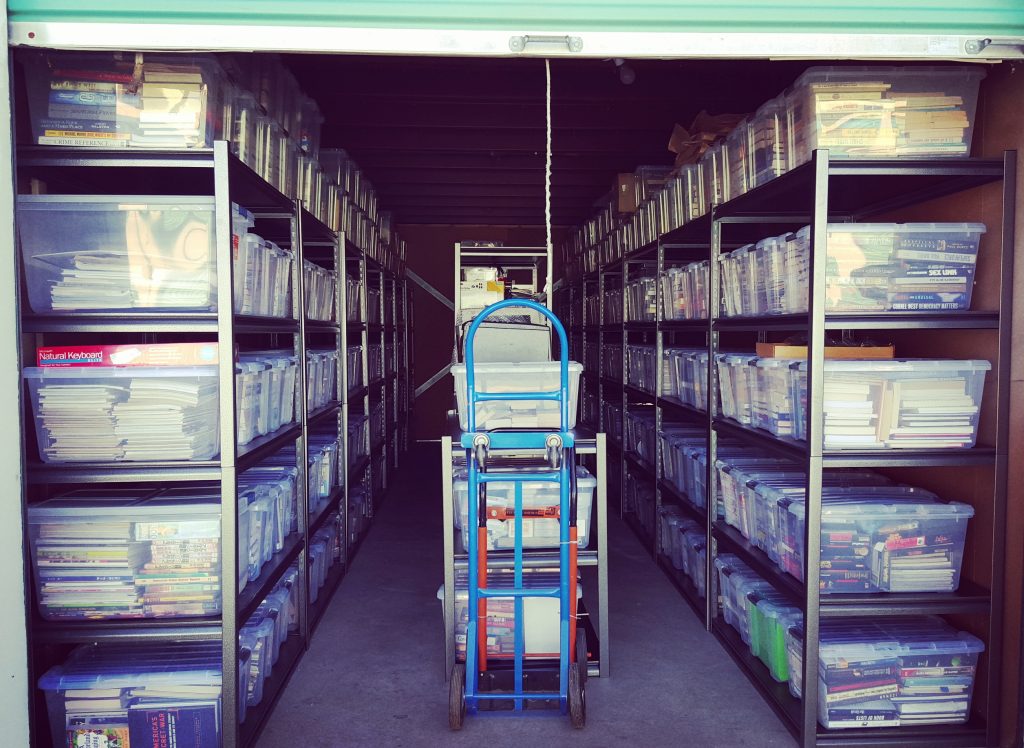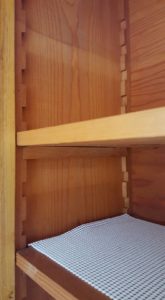
The work I do as a professional organizer is all about smart and safe storage. I consult on and implement day to day storage for:
- Immediate (daily) access – such as the kitchen cabinets, wardrobe closets, paperwork file cabinets
- Short term storage – garage, shed, or other residential on-site storage that needs to be occasionally accessed (and sometimes turns into long-term storage)
- Long-term storage – off-site public and private storage units, vaults, pods, etc. that will rarely be accessed
Here we will focus on downsizing anything stored that is rarely or never used, maximizing space for things you need to keep, and tips to prevent damage to long-term storage and things you love.
Downsizing Tips
Three Steps to Downsize & Minimize Storage
1. Make a declutter plan and stick to it. Set a solid schedule of purging sessions weekly or monthly (in the home), quarterly or bi-annually (in the garage/attic/basement), and bi-annually or annually (at storage unit). If downsizing in preparation for a move, start the process a few weeks to months before your move date. How far in advance you begin depends on how much free time you have and things you own. Work your way into closets, deep inside cabinets and drawers, under the bed, and through closets and boxes that have been ignored for too long. Pull out what you don’t need/like/use/wear, and place it into a donation/sell/give away box or bag. It’s a good idea to always have this kind of bag or box around the house to remind yourself to declutter. A little weekly and monthly decluttering goes a long way.
2. Let go of the easy stuff first. Leave the time consumers and things you are emotionally attached to for last. For many people the more challenging stuff to tackle is often paperwork, photos, and memorabilia. Put the challenging stuff aside and return to them later, after you deal with easier things and are inspired by the open space to continue moving forward.
3. Recruit a trusted friend. If it’s overwhelming for you to tackle a downsize project on your own, ask for help. Whether you call on a trusted friend, neighbor, or an experienced professional organizer, it’s important that this person have a patient and non-judgmental personality. Downsizing is a team effort. Choose someone you like that will keep you motivated to stay on schedule and moving forward. Bonus points if this person has a truck or van to help haul away donations.
Read more tips on decluttering before a move and how to tell when it is junk.
Tackle downsizing a little at a time for a healthier experience, and learn to become comfortable with the process of letting go…it truly has a lasting effect and higher rate of success in moving toward a clutter-free lifestyle.
Maximize Storage Space: Think Vertically
- Large, empty walls are valuable real estate. Consider maximizing use of these spaces first when planning built-in and shelf-standing storage shelves, cabinetry, and wardrobe closets.
- Use high quality, sturdy shelf and cabinet systems that don’t damage easily when moving from one home or storage space to another. These will likely be with you for the long-haul, so make sure the shelves are functional and pleasing to have around.
- Invest in secure bins and containers with flat lids for easy stacking. Make sure water cannot penetrate the base or lid of containers that will be stored in a garage, attic, basement, or off-site storage unit if there happens to be flooding or a leak in the roof, which often happens after a big rain.
- Adjustable shelving is a life saver – in kitchen cabinets, built-in cabinet systems, bookshelves, garage shelving.
- Use hooks to hang and suspend items in cabinets, closets, garages, and workspaces.
- Use shelf risers to maximize space that doesn’t have adjustable shelving. They work great for lots of areas, not just kitchens!
- Hang dresses, blouses, shirts, and tanks using slim hangers whenever possible. This uses space more efficiently than folding and prevents wrinkled clothing. Fold or use cascading pant/skirt hangers for bottoms. More on hangers here.
Tips for Safe Storage

- Climate control – At home or in a storage unit, your valuables do best when not exposed to humidity and fluctuating temperatures. Cold, wet weather can create dampness, mold, and rot, and extreme hot temperatures can melt, crack, and warp. Climate-control keeps indoor temperature between 55-85°F year-round, maintains a consistent humidity level, and is a storage necessity’ it’s a heater, air conditioner, humidifier, and dehumidifier all in one. Storing wine? The ideal storage temperature range is between 45° F and 65° F. Read more about wine storage here.
- Keep a clean Garage/Basement/Attic – Finished (with drywall and insulation) or unfinished (without drywall and insulation), it’s important to keep storage areas dry, dusted, and swept. Clear spiderwebs immediately, and keep things off the floor because rodents and other critters love to nest under piles.
- Mold and mildew prevention – In addition to temperature-controlled storage, there are homemade and store-bought mold and mildew prevention steps and products such as opening windows more often, using fans and dehumidifiers, and mold and mildew cleaners. Read mold and mildew prevention tips here and how charcoal briquettes can be used to absorb moisture and odor.
- Wrap and label stored furniture in clean moving blankets. You can use plastic movers wrap (easily found at Uhaul Stores) to secure the blankets into place, but never use plastic to completely cover a piece of furniture for long term storage, as condensation can build up in space with fluctuating temperatures, and cause damage. Blankets also keep your furniture dirt and dust-free, and prevents scratches and damage when stacked in storage.
- Clean/vacuum rugs, then roll and wrap in heavy paper or canvas cloth. Never fold rugs because permanent creases can result. Never use plastic (such as movers wrap) for long-term storage without temperature control, as this can cause condensation and damage the rug. Rugs need to breathe, especially those made with expensive, natural fibers such as wool. Keep rugs stored off the ground whenever possible to prevent damage from leaks and floor-scurrying critters.
- Acid-free containers/paper/portfolio binders work great for photos, important paperwork (such as house deeds and birth certificates), and flat artwork (charcoal sketches, watercolor, oils, and acrylics, etc).
- Cedar balls and blocks protect against moths.
- Always place a few rodent traps in long-term storage spaces.
Be sure to regularly check on items stored in the garage, attic, basement, shed, or an off-site storage unit in case of leaks and damage, especially during or immediately after a heavy rain or snow storm.

Book Recommendation: The Stuff Cure – a proven method to unstuff your excess, organize what you keep, and regain control of your life.
Isabella Guajardo, founder and owner of Bella Organizing, is a San Francisco Bay Area professional organizer offering home organizing and residential packing and move management services throughout the Greater San Francisco Bay Area.




